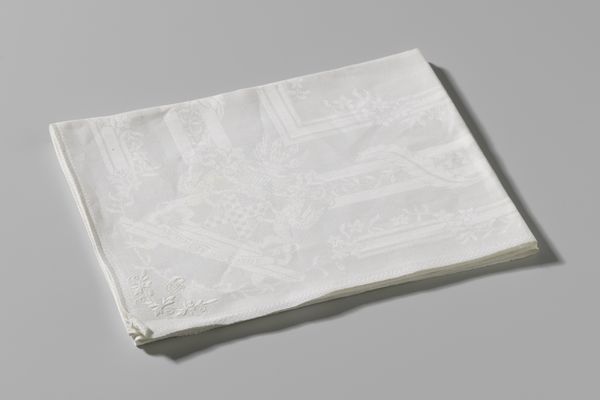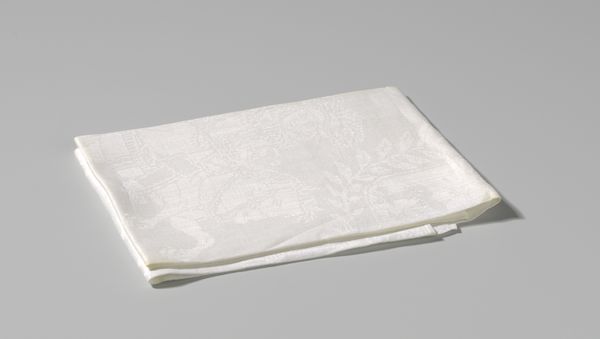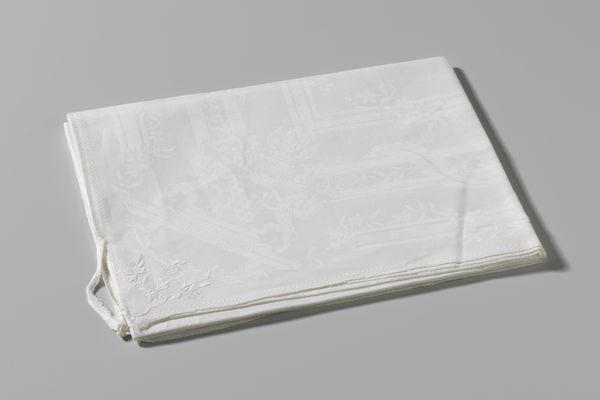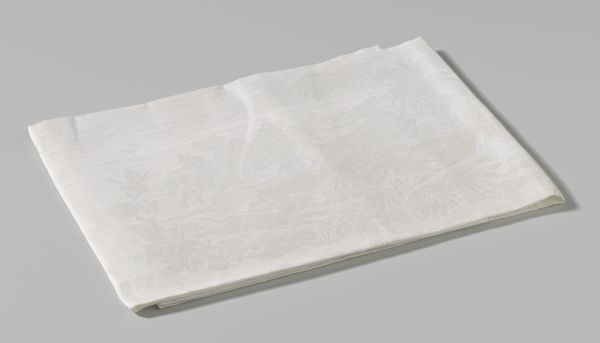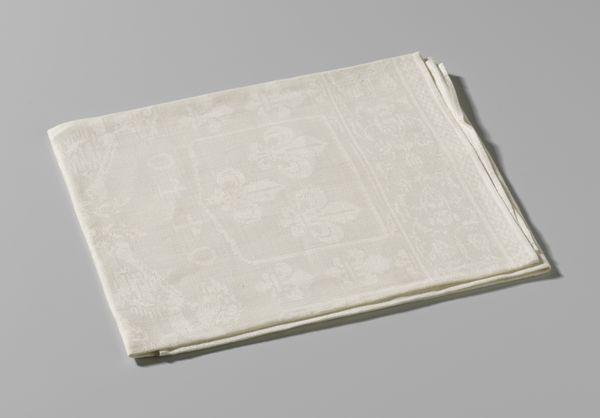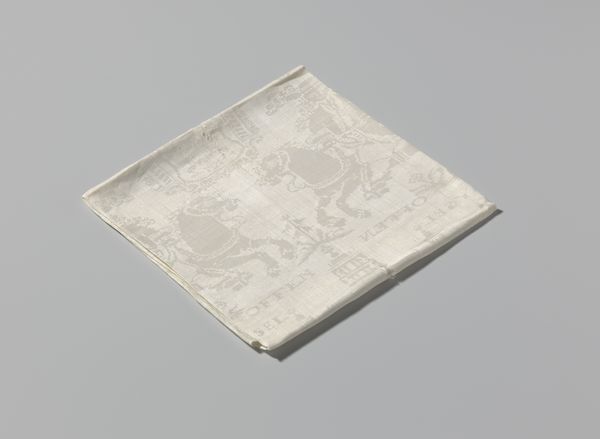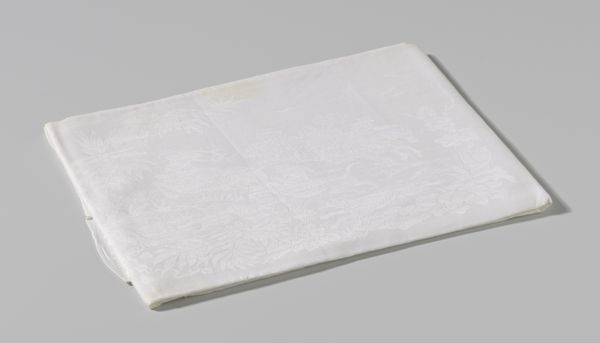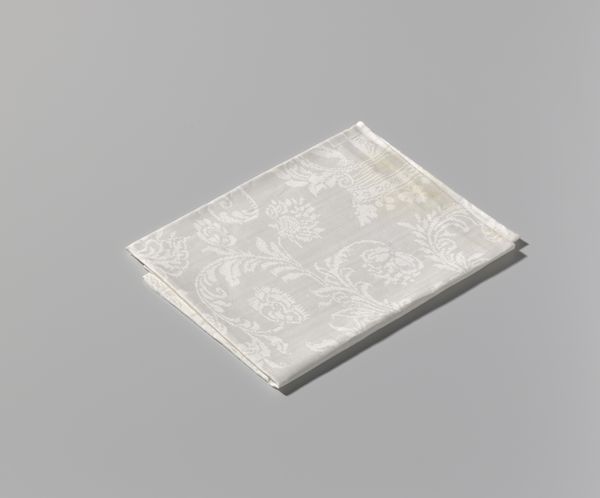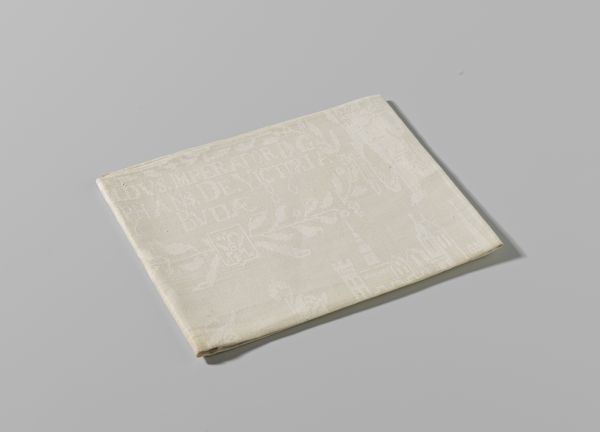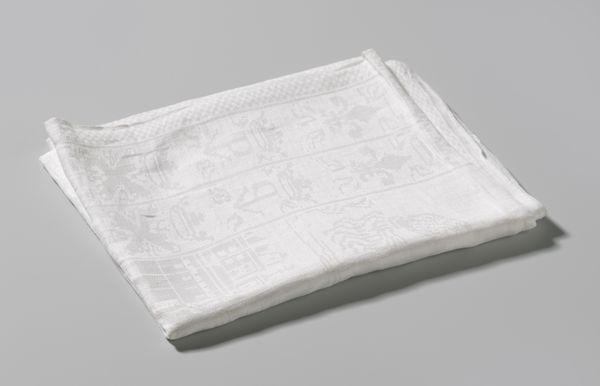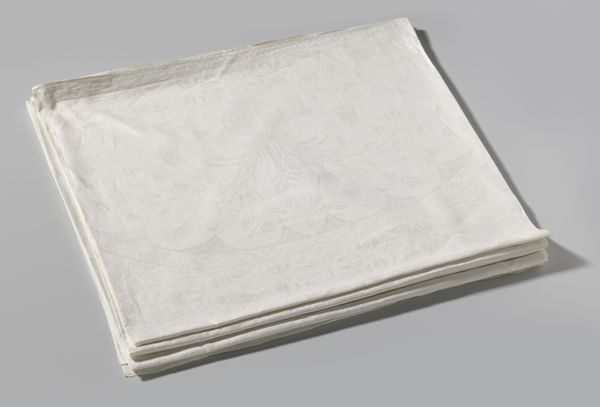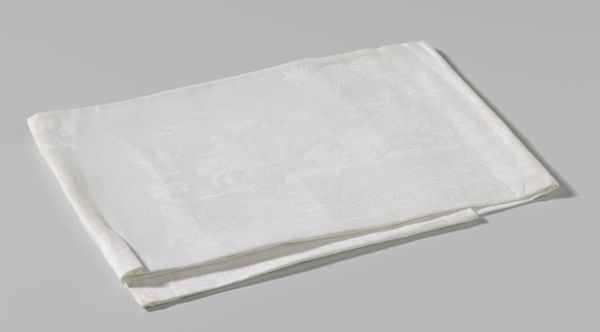
Servet met de verovering van Neuhäusel, Gran, Buda en Pest door Leopold I, keizer van Duitsland after 1686
0:00
0:00
anonymous
Rijksmuseum
weaving, textile
#
baroque
#
weaving
#
textile
#
history-painting
Dimensions: length 98 cm, width 71 cm
Copyright: Rijks Museum: Open Domain
Editor: This is a woven textile, a serviette depicting the conquest of Neuhäusel, Gran, Buda, and Pest by Leopold I, after 1686. The cloth’s whiteness and domestic function are interesting. How do you interpret this piece in light of its subject matter? Curator: The use of textile as a medium is particularly intriguing here, wouldn't you agree? History painting often occupies the monumental space of canvases and palaces, not the quotidian realm of the table. To have violent conquest depicted on an object associated with daily life speaks to the normalization, or even celebration, of imperial power within the domestic sphere. How does this subversion of the historical painting genre affect our understanding of 17th century cultural values? Editor: That's a powerful point! I hadn't considered the contrast between the brutality of war and the domestic setting. The fact that it's an anonymous piece makes you wonder too, who created it, who used it and why? Curator: Exactly. Consider the politics embedded within domestic craft. Textiles, often produced and used by women, become vehicles for conveying, or perhaps even contesting, dominant narratives of power. The weaving itself may be read as an act of subtle agency. Does it celebrate, commemorate, or even critique Leopold’s conquests by containing them within the soft, pliable structure of fabric? Who was this anonymous artist, what role did class and gender play, what was the function of this woven image? Editor: So, it's not just a simple depiction of a historical event, it's a statement about the way power permeates even our daily lives, challenging ideas of domesticity and craft. Curator: Precisely! The work invites us to consider how these interwoven histories create a dialogue between seemingly disparate aspects of society and ask vital questions about how images function within broader cultural frameworks. It's quite thought-provoking, isn't it? Editor: Absolutely. I'll definitely look at textiles in a new light from now on!
Comments
No comments
Be the first to comment and join the conversation on the ultimate creative platform.
